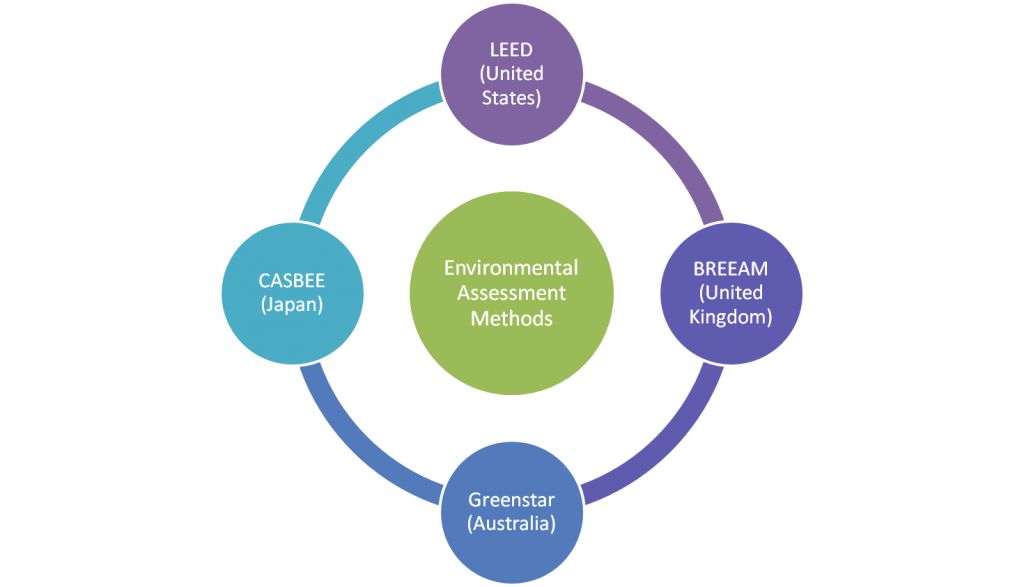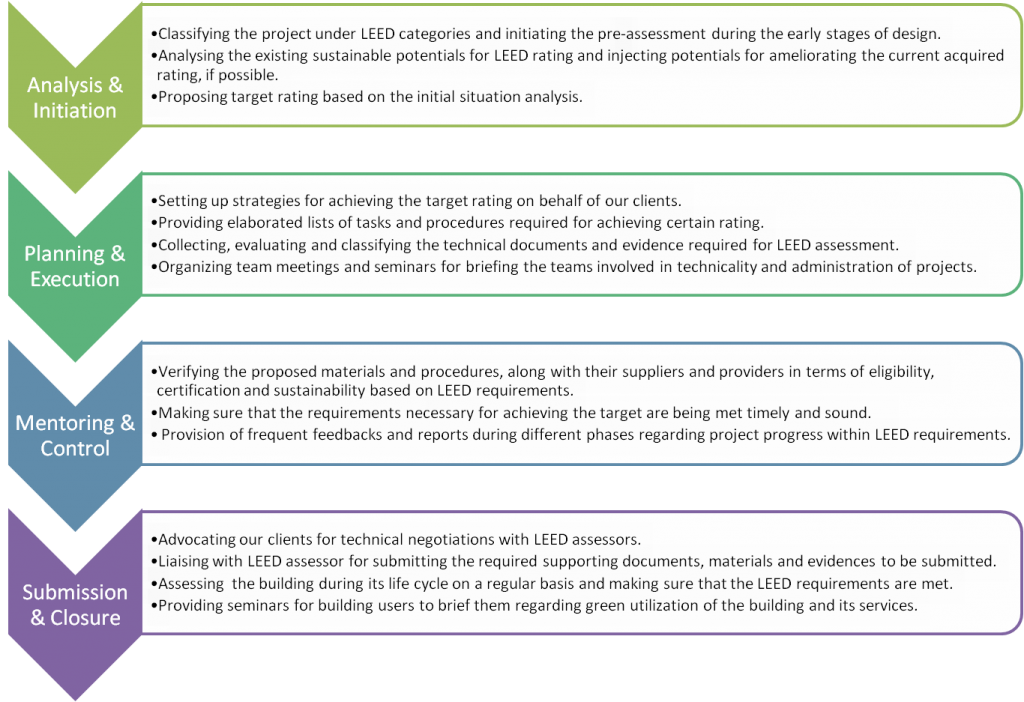Publicly displaying green credentials is becoming a must for organisations in our new sustainably-aware society. Multi-national companies are keen to show that every part of their business is green, including their buildings. In other words, being green and sustainable development, and indicating that by employing one of the conventional sustainability measures, is a part of CSR (corporate Social Responsibility).
Environmental assessment of buildings is nothing new, with the first national scheme, BREEAM (the Building Research Establishment Environmental Assessment Method), appearing in 1990. BREEAM has since expanded massively, going from a 19-page BRE report with 27 credits available, to a massive 350-page technical guide (for the office version) with 105 credits.
The US Green Building Council launched its Leadership in Energy and Environmental Design (LEED) in 1998. While similar methods have also sprung up, such as Greenstar in Australia and CASBEE in Japan, BREEAM and LEED are the main methods currently in use.
Based on the multinational nature of many companies, there is a fast growing trend for being measured, in terms of sustainability, by various measuring systems. Also, some companies would prefer their offices all around the world to be assessed against a unified measuring system. In this process, LEED is one of the most developed international options. For instance, Germany-based Siemens uses LEED for all of its new buildings around the world.
As a measuring tool, LEED is quite straight forward and it engages team involvement. The credits are based on optional standards with high level of adaptability. Furthermore, LEED Credits have percentage threshold and are being calculated by US Dollar.
LEED encompasses various building types including;
– New Construction,
– Existing Buildings: Operation and Maintenance,
– Commercial,
– Interiors,
– Shell & Core,
– Schools,
– Retail,
– Healthcare,
– Homes, and
– Neighbourhood Development.
The buildings are being assessed in different aspects/categories including;
– Sustainable Sites,
– Water Efficiency,
– Energy and Atmosphere,
– Materials and Resources,
– Indoor Environmental Quality, and
– Innovation in design.
LEED rating spectrum (From lowest to highest) is defined as;
– Certified (40–49 points),
– Silver (50–59 points),
– Gold (60–79 points), and
– Platinum (80 points and above).
As one of the leading consultants, Syntegra is offering a wide range of services concerning LEED accreditation and measurement. The services and procedures are listed below.
Syntegra Consulting is a leading energy consulting company in the UK – for further information about LEED requirements and LEED Assessment procedures please telephone +44 (0) 845 0091625 or e-mail:mail@syntegra-epc.co.uk.


You must be logged in to post a comment.